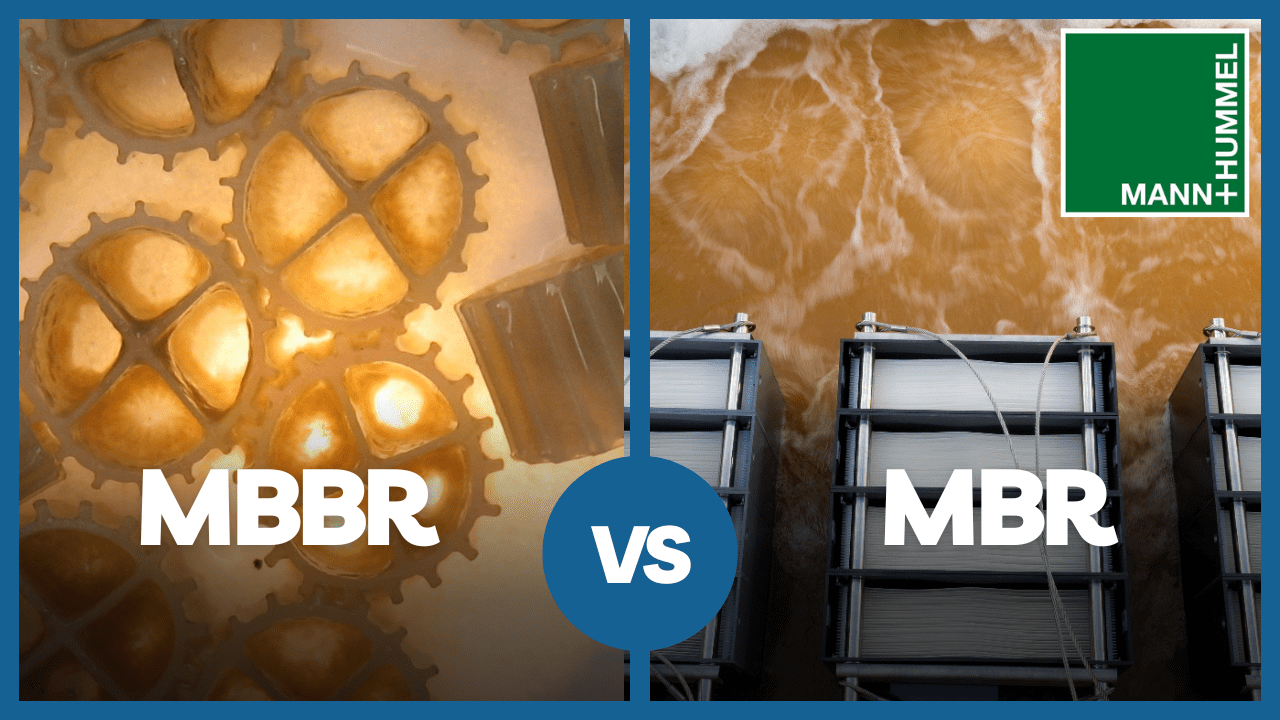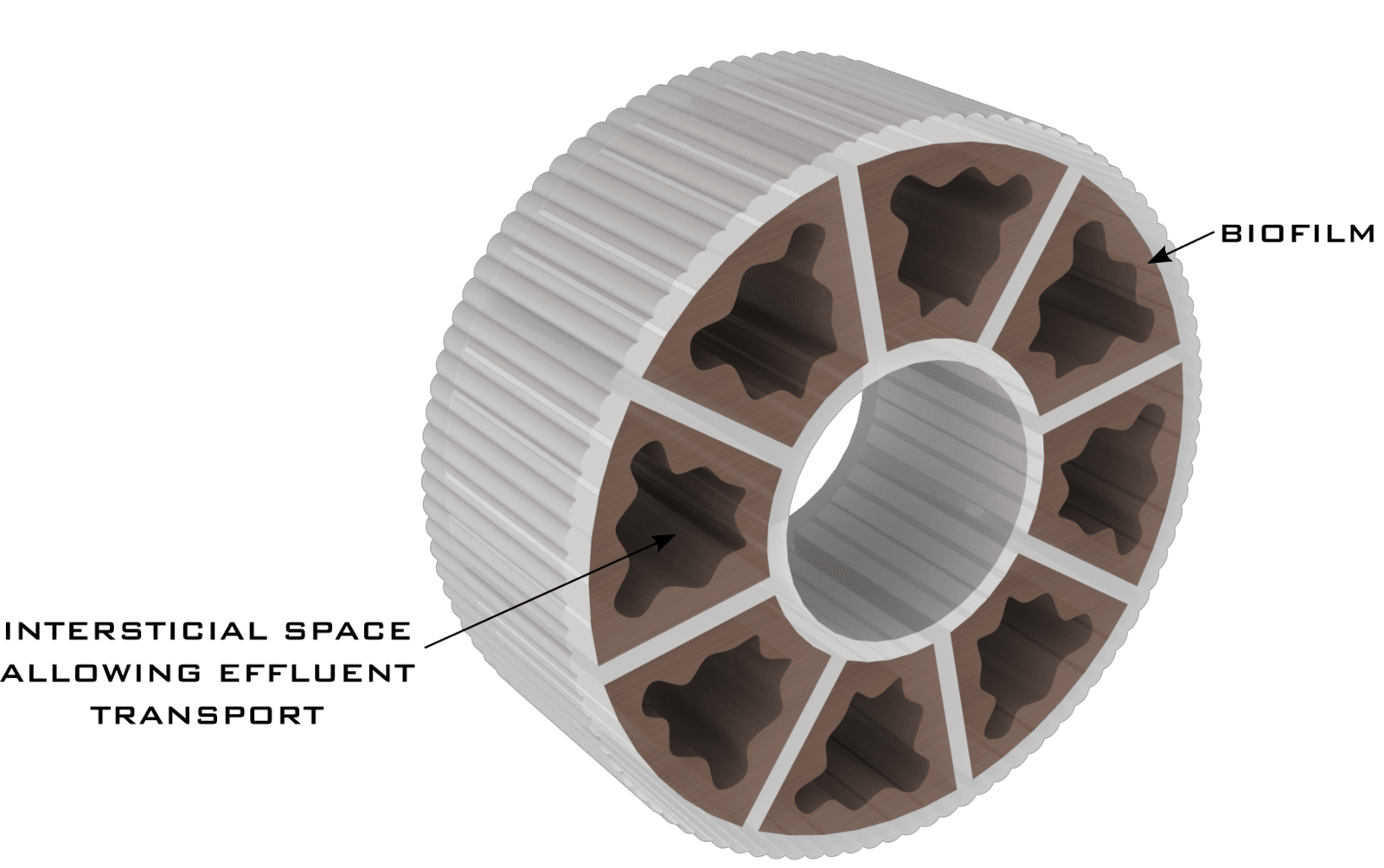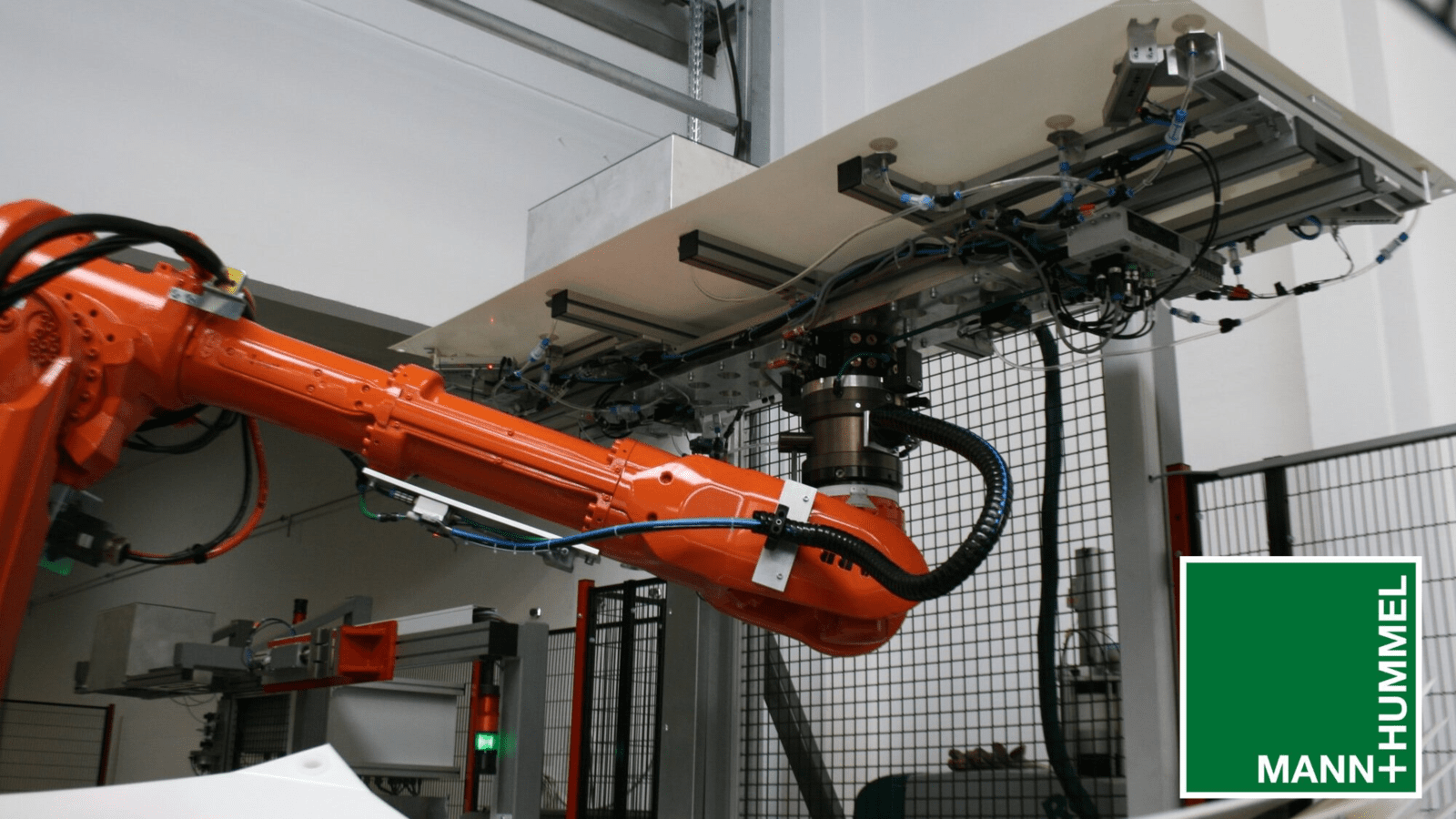
By understanding the key differences between MBBR and MBR technologies, you will be better equipped to choose the optimal wastewater treatment method for your specific application, ultimately contributing to the long-term sustainability of our environment.
MBBRs (Moving Bed Biofilm Reactors)
What are MBBRs?
MBBRs, or Moving Bed Biofilm Reactors, are a type of wastewater treatment technology that uses a biofilm to treat wastewater. In an MBBR, plastic media, such as K1 or K3, is used as a support for the biofilm. The media is suspended in the wastewater, and as it moves around, the biofilm on the media breaks down the organic matter in the wastewater.

What is a MBBR Chip?
How do MBBRs work?
In an MBBR, the wastewater flows through the reactor, and the plastic media moves around, creating a constantly changing environment for the biofilm. As the biofilm grows on the media, it breaks down the organic matter in the wastewater, converting it into carbon dioxide and water. The treated wastewater is then discharged, and the biofilm is continually regenerated as new organic matter is added to the reactor.
What are the benefits of MBBRs?
- High treatment capacity: MBBRs can handle high volumes of wastewater and provide efficient treatment of organic matter and nutrients.
- Small footprint: MBBRs require less space compared to conventional wastewater treatment processes, making them suitable for areas with limited space.
- Robust process: MBBRs are highly adaptable and can handle variations in flow and organic loading, making them a reliable treatment option for wastewater.
- Low sludge production: MBBRs produce less sludge compared to conventional wastewater treatment processes, reducing the need for sludge handling and disposal.
- Low energy consumption: MBBRs consume less energy compared to traditional wastewater treatment processes, which reduces operating costs and carbon footprint.
- Easy to install and operate: MBBRs are easy to install and operate, requiring less maintenance and operator input compared to other treatment processes.
- Flexibility: MBBRs can be designed and operated to treat a variety of wastewaters, including high-strength or low-temperature wastewater.
- Suitable for upgrades: MBBRs can be retrofitted into existing treatment plants, making them a viable option for plant upgrades or expansions.
- Enhanced process control: MBBRs can be controlled automatically and provide better process control, allowing for optimal performance and easier troubleshooting.
MBRs (Membrane Biofilm Reactors)
What are MBRs?
In an MBR, the wastewater flows through an aerobic reactor, and the activated sludge floc performs the treatment step by breaking down the organic matter in the wastewater. The MBR equipment performs the physical separation of the flocculated solids from the treated wastewater. The permeate flows "forward" to the next treatment step or discharge, while the retained solids may be recirculated back into the aerobic treatment reactor. MBRs use a membrane to filter the treated wastewater and remove any remaining suspended solids, bacteria, and pathogens. The membrane filtration replaces the solids separation step that is typically done in a gravity clarifier in traditional wastewater treatment systems.

How MBR's are Manufactured
MBR membranes are typically made of polymeric materials like PES, PVDF, or PP. The manufacturing process for MBR membranes involves polymer preparation, membrane casting, phase inversion, membrane treatment, and membrane module assembly. Raw polymer material is dissolved in a solvent to create a homogeneous solution, which is then cast onto a flat substrate and the solvent is evaporated. The solid polymer film is immersed in a coagulation bath to create a porous membrane structure. The membrane is then treated with various chemical and physical treatments to improve its performance and durability. Finally, the membranes are cut to size and assembled into modules designed in various configurations.
How do MBRs work?
In an MBR, the wastewater flows through the reactor, and a biofilm is used to break down the organic matter in the wastewater. The treated wastewater is then filtered through a membrane, removing any remaining solids, bacteria, and pthogens. The filtered water is then discharged, and the biofilm is continually regenerated as new organic matter is added to the reactor.
What are the benefits of MBRs?
- Efficient wastewater treatment: MBRs provide effective treatment of wastewater by removing organic matter, nutrients, and pathogens from the water.
- Small footprint: MBRs have a smaller footprint compared to traditional wastewater treatment processes, making them suitable for areas with limited space.
- High-quality effluent: MBRs produce high-quality effluent that can be reused for non-potable purposes or discharged into the environment.
- Reduced sludge production: MBRs produce less sludge compared to conventional wastewater treatment processes, which reduces the need for sludge handling and disposal.
- Enhanced process control: MBRs are highly automated and offer better process control, allowing for optimal performance and easier troubleshooting.
- Resilient to shock loads: MBRs are more resilient to shock loads and variations in flow and organic loading compared to traditional wastewater treatment processes.
- Energy efficient: MBRs consume less energy compared to traditional wastewater treatment processes, which reduces operating costs and carbon footprint.
- Flexibility: MBRs can be designed and operated to treat a variety of wastewaters, including high-strength or low-temperature wastewater.
FAQs:
Which is better, MBBRs or MBRs?
Both MBBRs and MBRs have their unique benefits and are best suited for different wastewater treatment applications.
What are some of the limitations of MBBRs and MBRs?
MBBRs and MBRs have some limitations, such as:
- MBBRs can be sensitive to changes in temperature, pH, and organic loading rates.
- MBRs can be sensitive to fouling of the membrane, which can decrease the efficiency of the system.
- Both MBBRs and MBRs require regular maintenance to ensure they are operating at peak efficiency.
Which technology is more cost-effective?
The cost of MBBRs and MBRs can vary depending on the size of the system, the application, and the location. However, in general, MBBRs are considered more cost-effective than MBRs due to their lower capital and operating costs.
What are some common applications of MBBRs and MBRs?
MBBRs and MBRs are used in a variety of applications, such as:
- Municipal wastewater treatment
- Industrial wastewater treatment
- Land-based aquaculture and fish farming
- Greywater treatment for residential and commercial buildings
